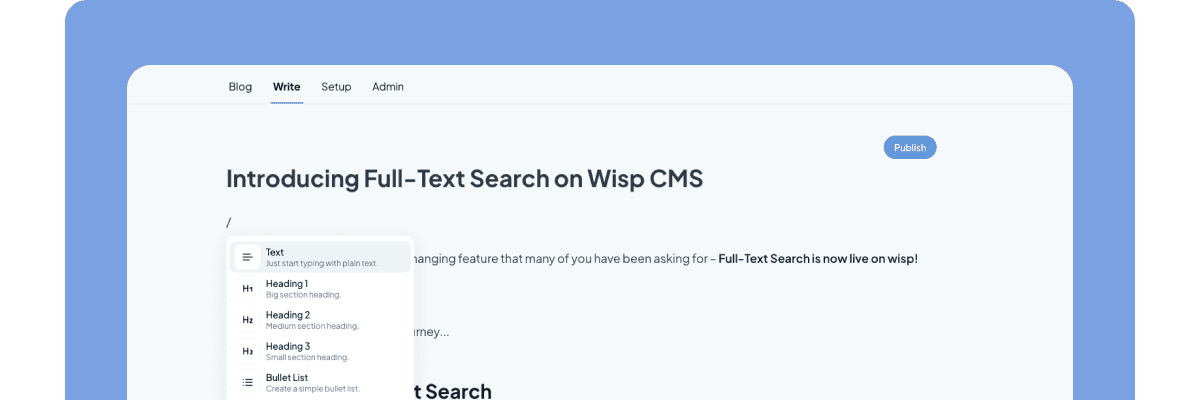
You've just joined a new React project and you're staring at a mess of inconsistent API responses, poorly structured types, and a codebase that seems to follow no clear organization pattern. Your heart sinks as you realize you'll need to spend countless hours just figuring out where to put your type definitions and how to manage them effectively.
Sound familiar? You're not alone. Many developers, especially those new to React and TypeScript, struggle with organizing their types in a way that makes sense and scales well with their projects.
The Challenge of Type Organization
The reality is that many React projects start simple but quickly become complex beasts. You might begin with a few basic interfaces, but soon you're dealing with:
Inconsistent API responses that return different shapes of data for the same endpoint
Multiple joined tables and nested object structures
Random fields that appear and disappear depending on the context
Legacy code that doesn't follow any clear typing patterns
One developer shared their experience: "I've come from a project where the API was an absolute mess. First job, first project, first time using React, no one to help. At the time, I spent an entire week researching libraries, tools, folder structures. Anything that could help me make it work."
The Foundation: Basic Project Structure
Before diving into type organization, let's establish a solid foundation. A well-organized React project typically follows this structure:
src/
├── components/
├── pages/
├── hooks/
├── utils/
├── types/
├── App.tsx
└── index.tsx
This structure provides a clear separation of concerns while maintaining flexibility. However, the real challenge isn't just creating folders—it's deciding how to organize your types within this structure.
The First Rule: Co-location
The single most important principle in type organization is co-location: define your types where they're used. This means:
Component props types should live in the component file
API response types should live near the API calls
Shared types should live in a dedicated types folder
This approach solves one of the biggest pains developers face: constantly jumping between files to understand how types are related. As one experienced developer puts it, "Co-locate your types first - define them in the place where they're used."
Practical Implementation
Let's look at how to implement these principles in practice.
1. Component-Level Types
For component types, keep them in the same file as the component:
// UserProfile.tsx
interface UserProfileProps {
user: {
id: number;
name: string;
email: string;
};
onEdit: () => void;
}
export const UserProfile: React.FC<UserProfileProps> = ({ user, onEdit }) => {
// Component implementation
};
2. Shared Types
For types used across multiple components, create a dedicated types file in your types directory:
// types/user.ts
export interface User {
id: number;
name: string;
email: string;
preferences?: UserPreferences;
}
export interface UserPreferences {
theme: 'light' | 'dark';
notifications: boolean;
}
3. API Response Types
When dealing with API responses, especially inconsistent ones, create interface maps that handle different response shapes:
// api/types.ts
interface BaseResponse<T> {
data: T;
status: number;
message?: string;
}
interface UserResponse extends BaseResponse<User> {
metadata?: {
lastLogin: string;
sessionId: string;
};
}
Best Practices for Type Management
1. Use TypeScript's Advanced Features
TypeScript offers powerful features to help manage complex types:
// Partial types for optional updates
type UserUpdate = Partial<User>;
// Union types for variant handling
type ApiResponse<T> = SuccessResponse<T> | ErrorResponse;
// Utility types for better type safety
type RequiredUserFields = Required<Pick<User, 'id' | 'email'>>;
2. Avoid Common Pitfalls
Don't fall into these common traps:
Using
anyas an escape hatchOver-generalizing types that should be specific
Creating deeply nested type structures
Not documenting complex type relationships
Advanced Organization Strategies
Feature-Based Organization
For larger applications, consider organizing types by feature rather than type:
src/
├── features/
│ ├── user/
│ │ ├── types.ts
│ │ ├── UserProfile.tsx
│ │ └── UserSettings.tsx
│ └── product/
│ ├── types.ts
│ ├── ProductList.tsx
│ └── ProductDetail.tsx
└── shared/
└── types/
├── common.ts
└── api.ts
This approach makes it easier to:
Locate related code and types
Maintain feature isolation
Scale the application without confusion
Type Organization for Different Project Sizes
Small Projects (1-5 developers)Keep it simple with co-located types
Use a single shared types file for common interfaces
Avoid over-engineering the structure
Implement feature-based organization
Create clear conventions for type naming and location
Use barrel exports for convenient importing
Consider a monorepo approach with shared type packages
Implement strict type validation and documentation
Use automated tools to enforce type organization patterns
Handling Complex Scenarios
1. Inconsistent APIs
When dealing with inconsistent APIs (a common pain point mentioned by developers), create adapter types:
// api/adapters.ts
interface RawUserResponse {
// Type matching the actual API response
user_id: number;
user_name: string;
user_email?: string;
}
interface NormalizedUser {
// Your application's consistent user type
id: number;
name: string;
email: string | null;
}
function normalizeUser(raw: RawUserResponse): NormalizedUser {
return {
id: raw.user_id,
name: raw.user_name,
email: raw.user_email || null,
};
}
2. Dynamic Types
For situations where types need to be dynamic, use generics and conditional types:
type DynamicResponse<T extends 'user' | 'product'> = {
user: UserResponse;
product: ProductResponse;
}[T];
function fetchData<T extends 'user' | 'product'>(
type: T
): Promise<DynamicResponse<T>> {
// Implementation
}
Tools and Resources
1. TypeScript Configuration
Optimize your TypeScript configuration for better type organization:
{
"compilerOptions": {
"strict": true,
"baseUrl": "src",
"paths": {
"@types/*": ["types/*"],
"@components/*": ["components/*"]
}
}
}
2. VS Code Extensions
Install these helpful extensions for better type management:
TypeScript Hero: Organizes your imports
Pretty TypeScript Errors: Makes type errors more readable
TypeScript Import Sorter: Keeps your type imports organized
Conclusion
Organizing types in a React project doesn't have to be overwhelming. Start with these key principles:
Co-locate types with their usage
Create shared types only when necessary
Use feature-based organization for larger projects
Implement consistent naming conventions
Leverage TypeScript's advanced features
Remember what one developer wisely noted: "Organization is supposed to increase your productivity and quality, not get in the way of it." The best type organization system is one that works for your team and makes development easier, not harder.
As your project grows, be prepared to evolve your type organization strategy. What works for a small project might not scale to a larger one, and that's okay. The key is to maintain consistency and clarity while remaining flexible enough to adapt to your project's changing needs.
Additional Resources
TypeScript Handbook - Official TypeScript documentation
React TypeScript Cheatsheet - Community-driven cheat sheet for React with TypeScript
Josh Comeau's File Structure Guide - Comprehensive guide on React file structure
DeveloperWay's Project Structure - Advanced insights on React project structure
Remember, the goal isn't perfection but rather creating a maintainable and scalable system that helps your team work effectively. Start with these principles, adapt them to your needs, and iterate as your project grows.



